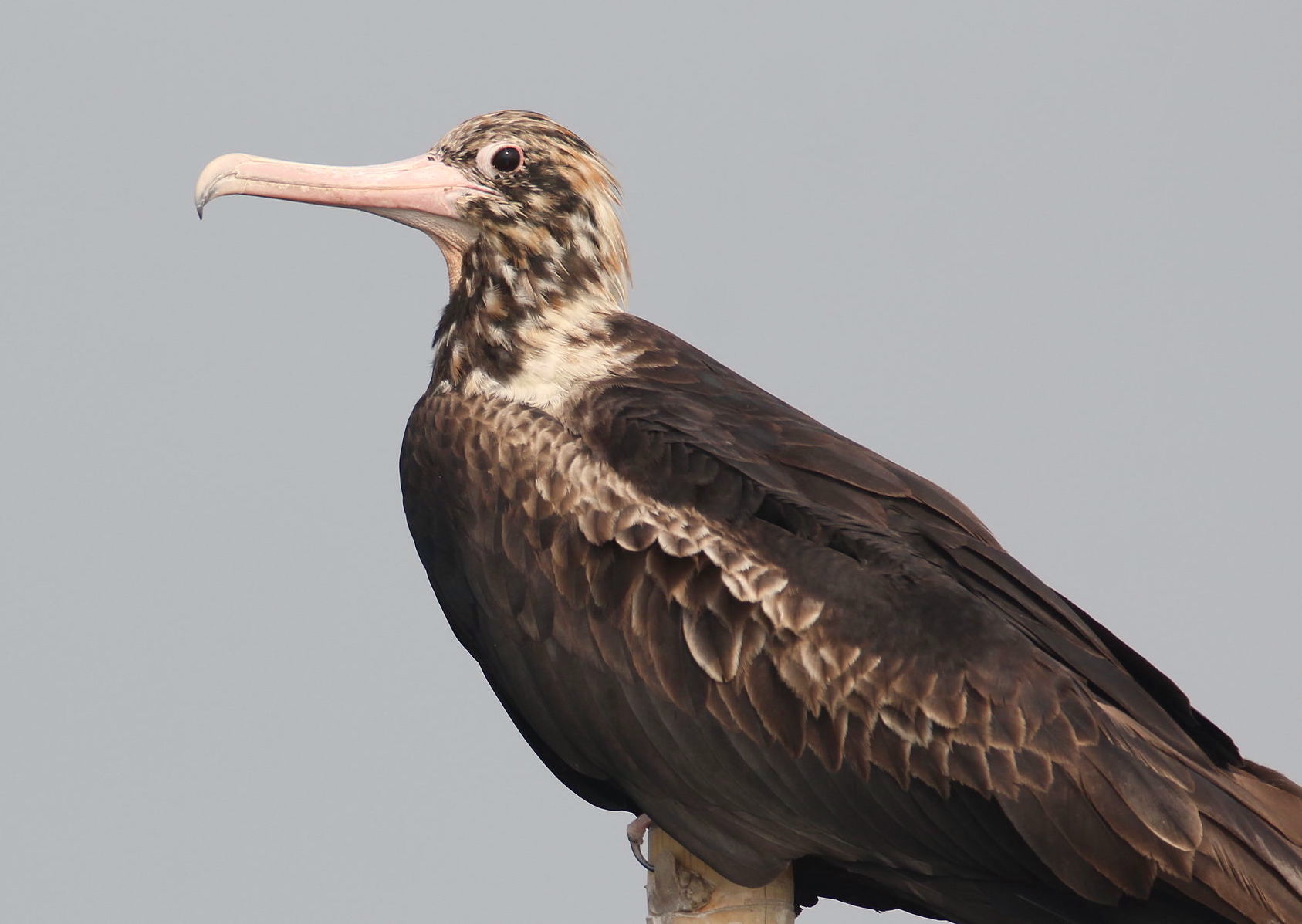Fregata Andrewsi on:
[Wikipedia]
[Google]
[Amazon]
The Christmas frigatebird (''Fregata andrewsi''), or Christmas Island frigatebird, is a seabird of the frigatebird family
 The Christmas frigatebird measures in length, has a wingspan of and weighs around . The adult male of this species is easily identified, since he is all black except for a white belly patch. Other plumages resemble those of the smaller
The Christmas frigatebird measures in length, has a wingspan of and weighs around . The adult male of this species is easily identified, since he is all black except for a white belly patch. Other plumages resemble those of the smaller
BirdLife International species factsheetInternet Bird Collection: photos, videos and audio recordingsAudio recordings from xeno-canto
{{Taxonbar, from=Q1263210 Christmas frigatebird Birds of Christmas Island Critically endangered fauna of Oceania Critically endangered fauna of Asia Christmas frigatebird Christmas frigatebird
Fregatidae
Frigatebirds are a Family (biology), family of seabirds called Fregatidae which are found across all tropical and subtropical oceans. The five extant species are classified in a single genus, ''Fregata''. All have predominantly black plumage, l ...
which is an endemic
Endemism is the state of a species being found only in a single defined geographic location, such as an island, state, nation, country or other defined zone; organisms that are indigenous to a place are not endemic to it if they are also foun ...
breeder to Christmas Island
Christmas Island, officially the Territory of Christmas Island, is an States and territories of Australia#External territories, Australian external territory in the Indian Ocean comprising the island of the same name. It is about south o ...
in the Indian Ocean. Apart from the Ascension frigatebird, the three other species of frigatebird have much more widely distributed breeding locations.
The Christmas frigatebird is a large lightly built seabird with brownish-black plumage, long narrow wings and a deeply forked tail. It has a wingspan of around . The male has an egg shaped white patch on his belly and a striking red gular sac which he inflates to attract a mate. The female is slightly larger than the male and has a white breast and belly. They feed on fish taken in flight from the ocean's surface (mostly flying fish
The Exocoetidae are a family (biology), family of Saltwater fish, marine Actinopterygii, ray-finned fish in the order (biology), order Beloniformes, known colloquially as flying fish or flying cod. About 64 species are grouped in seven genus, ge ...
), and sometimes indulge in kleptoparasitism
Kleptoparasitism (originally spelt clepto-parasitism, meaning "parasitism by theft") is a form of feeding in which one animal deliberately takes food from another. The strategy is evolutionarily stable when stealing is less costly than direct f ...
, harassing other birds to force them to regurgitate their food. The species is listed as Vulnerable by the International Union for Conservation of Nature
The International Union for Conservation of Nature (IUCN) is an international organization working in the field of nature conservation and sustainable use of natural resources. Founded in 1948, IUCN has become the global authority on the stat ...
(IUCN).
Taxonomy and systematics
The Christmas frigatebird was once considered to belong to the species ''Fregata aquila'' but in 1914 the Australian ornithologist Gregory Mathews proposed that the Christmas frigatebird should be considered as a separate species with thebinomial name
In taxonomy, binomial nomenclature ("two-term naming system"), also called binary nomenclature, is a formal system of naming species of living things by giving each a name composed of two parts, both of which use Latin grammatical forms, altho ...
''Fregata andrewsi'' in honour of the English paleontogist Charles Andrews. Of the four other species within the genus ''Fregata'', genetic analysis has shown that the Christmas frigatebird is most closely related to the great frigatebird
The great frigatebird (''Fregata minor'') is a large seabird in the frigatebird family (biology), family. There are major nesting populations in the tropical Pacific Ocean, such as Hawaii and the Galápagos Islands; in the Indian Ocean, colonies ...
.
Description
lesser frigatebird
The lesser frigatebird (''Fregata ariel'') is a seabird of the frigatebird family Fregatidae. At around 75 cm (30 in) in length, it is the smallest species of frigatebird. It occurs over tropical and subtropical waters across the Indian ...
, but have whiter bellies and longer white underwing spurs.
Status
The Christmas frigatebird is endemic to Christmas Island and breeds in only four main nesting colonies. In 2003 there were 1,200 breeding pairs but as frigatebirds normally breed every other year, the total adult population was estimated to be between 3,600 and 7,200 individuals. The species has a small population and breeds on just one island. It was formerly listed as critically endangered by the IUCN, and is now listed as vulnerable. Populations, however, continue to decline due to persecution by fishermen, loss of breeding habitat associated withphosphate mining
Phosphates are the naturally occurring form of the element phosphorus.
In chemistry, a phosphate is an anion, salt, functional group or ester derived from a phosphoric acid. It most commonly means orthophosphate, a derivative of orthophosphor ...
, marine pollution and entanglement in fishing equipment.
References
Further reading
*External links
BirdLife International species factsheet
{{Taxonbar, from=Q1263210 Christmas frigatebird Birds of Christmas Island Critically endangered fauna of Oceania Critically endangered fauna of Asia Christmas frigatebird Christmas frigatebird